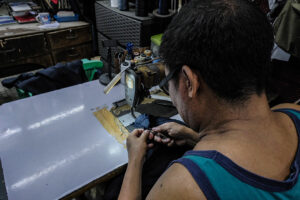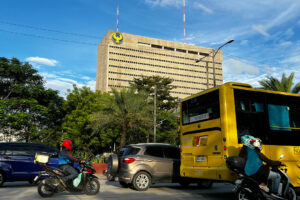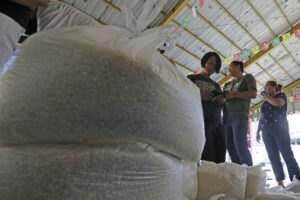By Joey Roi Bondoc andBrent Respicio
THE Philippine economy is starting to recover. With a 5.5% growth in 2023, the country was the fastest-growing in Southeast Asia. The Philippines is projected to achieve sustained growth for the remainder of the year and this is likely to make the country one of the fastest if not the fastest growing Southeast Asian economy.
But while the Philippines is receiving more investment pledges from Asian and European countries, particularly those funneled into manufacturing and renewable sectors, the country still lags behind its Southeast Asian peers. In 2022, for instance, the Philippines attracted $9.4 billion in foreign direct investments (FDIs), much less than the FDIs attracted by Thailand ($11.2 billion), Malaysia ($14.7 billion), Indonesia ($24.7 billion), and Singapore ($140.8 billion).
The Philippines definitely has a lot of catching up to do. But if we want to attract more foreign investments that will eventually absorb industrial space and warehouses, we need to ensure that the Philippines is open for business, that is, the business registration process is streamlined; corruption is minimized or eliminated; and infrastructure network is comparable to what our ore progressive nations boast of.
The Philippines must ensure its competitiveness globally. In the latest IMD Global Competitiveness Report, the Philippines ranked 52nd while Thailand and Singapore placed 30th and 4th respectively out of 64 countries surveyed. The Philippines needs to improve in terms of infrastructure and government efficiency if it wants to improve its global ranking.
Colliers Philippines has highlighted a number of recommendations for developers and locators to capture the industrial segment’s low-hanging fruits.
EXPAND INDUSTRIAL FOOTPRINT IN CENTRAL LUZONThe Department of Trade and Industry (DTI) is currently pitching Central Luzon as a manufacturing and logistics hub, highlighting growth opportunities in Pampanga’s New Clark City, Bataan’s Freeport Area, and Tarlac’s Luisita Industrial Park. Singaporean firms are also keen on investing in the Filinvest Innovation Park in New Clark City. The first phase of the industrial hub is now accepting locators, particularly companies involved in logistics, e-commerce, light manufacturing, and data center operations. Colliers believes that the modernization of Clark International Airport is likely to raise the attractiveness of Central Luzon for more manufacturing and logistics investments. The development of public projects such as the Manila-Clark Railway, as well as cargo railway systems should also spur growth in the region.
Colliers Philippines believes that the region remains a viable alternative location outside of Cavite-Laguna-Batangas (Calaba) corridor given its skilled manpower and relatively cheaper wages. Developers and locators should keep an eye on the completion of new industrial parks and facilities in the region.
OPPORTUNE TIME TO MODERNIZE WAREHOUSESWe recommend that developers or landlords increase power supply and provide ancillary spaces from existing facilities to accommodate new technologies such as robotics, improved lighting systems, and artificial intelligence (AI) systems. With the growing demand for same-day deliveries, e-commerce companies should be proactive in partnering with logistics firms with modern warehouses and efficient delivery systems.
DIVERSIFICATION IS KEY TO INDUSTRIAL EXPANSIONProperty firms should consider developing industrial parks and facilities that will cater to a wide gamut of locators. Colliers believes that this direction is important if developers want to capture industrial locators from various industries including fast-moving consumer goods (FMCG), automobile parts, electronics, and logistics. These segments recently captured big-ticket investments from locators that took up industrial spaces in northern and southern Luzon.
The development of more economic zones is part of the Philippine Development Plan (PDP) 2023 to 2028 crafted by the Marcos Administration. In our view, this supports the government’s push for industrialization which in turn should benefit industrial parks and facilities across the country. Recently, the Philippine Economic Zone Authority (PEZA) approved the creation of 29 new economic zones in the country, most of which are industrial estates.
INTEGRATE TOWNSHIP COMPONENTS INTO INDUSTRIAL PARKSWe strongly recommend that industrial park developers incorporate industrial spaces and facilities within their township projects. For instance, Aboitiz InfraCapital’s LIMA Estate is composed of an industrial park, LIMA Technology Center, a residential subdivision (The Villages at Lipa) and a co-working facility, The Satellite. The township will also feature hotels, dormitories and commercial areas. Other industrial parks located inside integrated communities include Pueblo de Oro’s Light Industry and Science Park IV in The Townscapes Malvar in Batangas and Filinvest Land’s Filinvest Innovation Park in Ciudad de Calamba in Laguna. We’ve heard that some developers are also exploring the viability of establishing co-working facilities within their own industrial parks which will cater to outside employees.
WHAT’S IN STORE FOR THE PHILIPPINE INDUSTRIAL SECTORThe Philippine industrial sector remains resilient. In fact, it achieved sustained growth even at the height of the pandemic in 2020 and 2021 as the country experienced a surge in the demand for modern warehouses and cold chain facilities. Colliers sees enormous upside for this property segment especially as we expect the investment pledges committed with President Marcos materializing over the next 12 to 24 months. This should result in an aggressive take up of industrial land and modern warehouses especially in the Philippines’ major industrial corridors — central Luzon and southern Luzon. Developers want to corner a greater share of the industrial pie that’s why we expect property firms to ramp up their industrial footprint moving forward.
Joey Roi Bondoc is the research director while Brent Respicio is a research analyst at Colliers Philippines.





